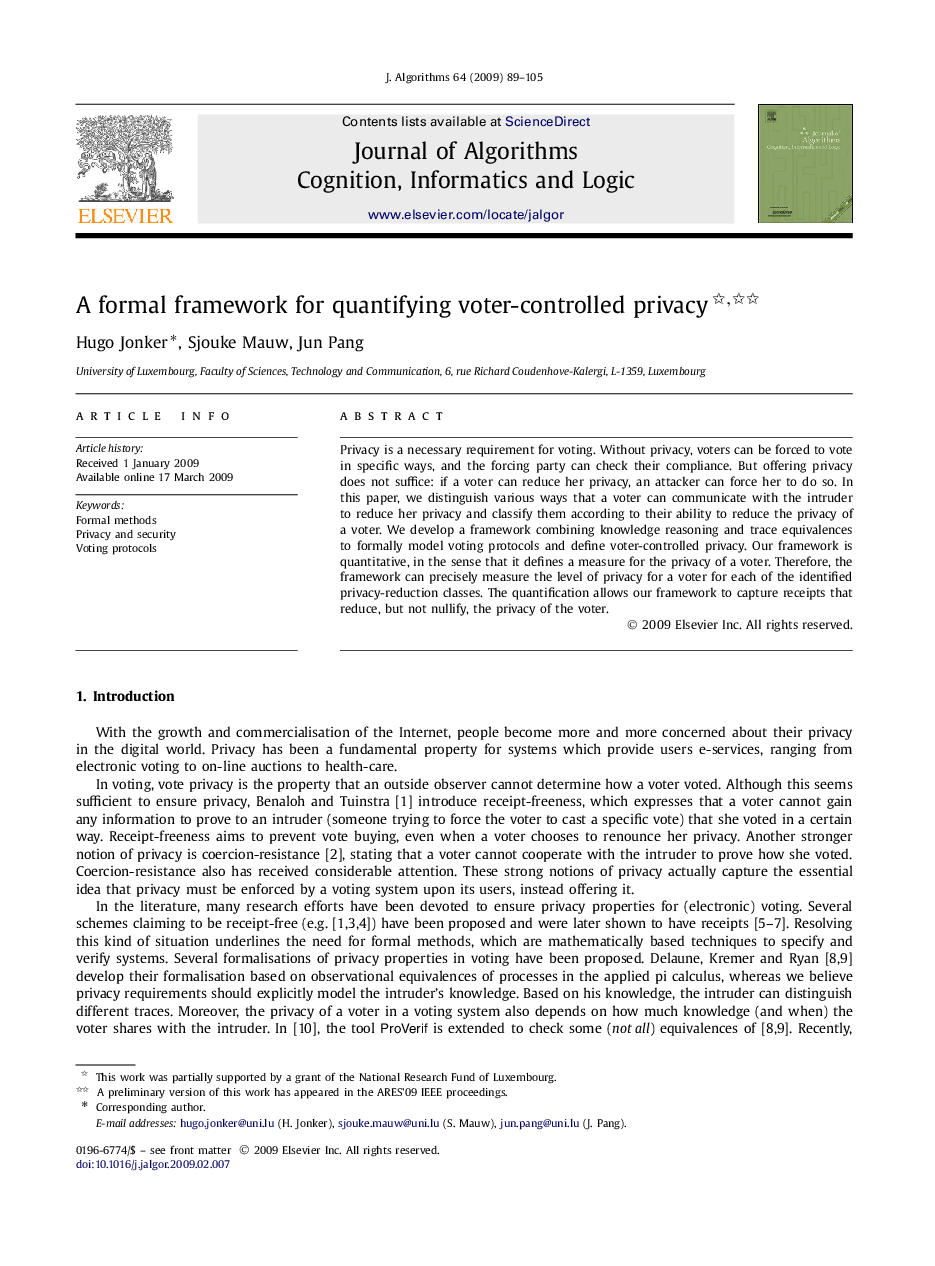| Article ID | Journal | Published Year | Pages | File Type |
|---|---|---|---|---|
| 429293 | Journal of Algorithms | 2009 | 17 Pages |
Privacy is a necessary requirement for voting. Without privacy, voters can be forced to vote in specific ways, and the forcing party can check their compliance. But offering privacy does not suffice: if a voter can reduce her privacy, an attacker can force her to do so. In this paper, we distinguish various ways that a voter can communicate with the intruder to reduce her privacy and classify them according to their ability to reduce the privacy of a voter. We develop a framework combining knowledge reasoning and trace equivalences to formally model voting protocols and define voter-controlled privacy. Our framework is quantitative, in the sense that it defines a measure for the privacy of a voter. Therefore, the framework can precisely measure the level of privacy for a voter for each of the identified privacy-reduction classes. The quantification allows our framework to capture receipts that reduce, but not nullify, the privacy of the voter.
